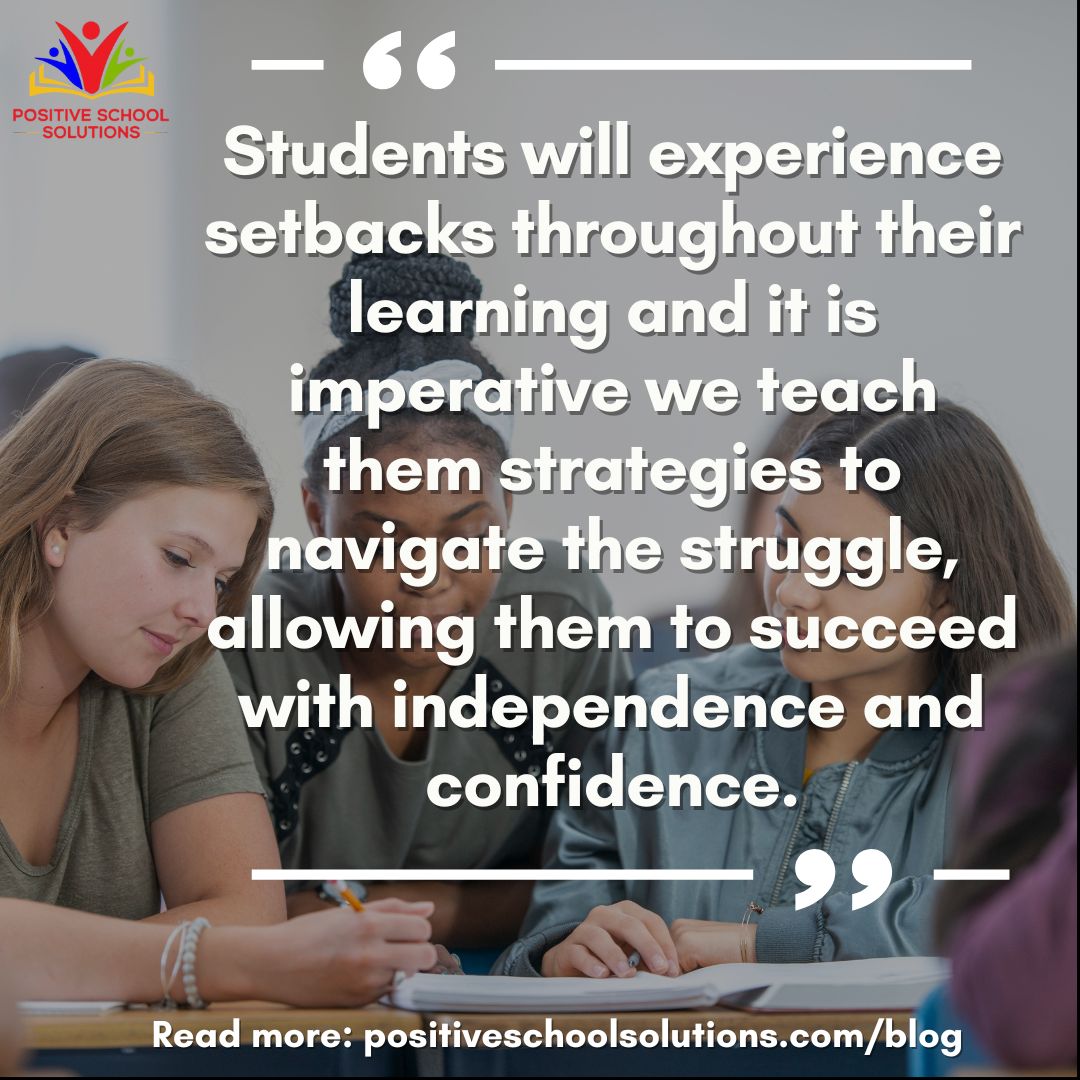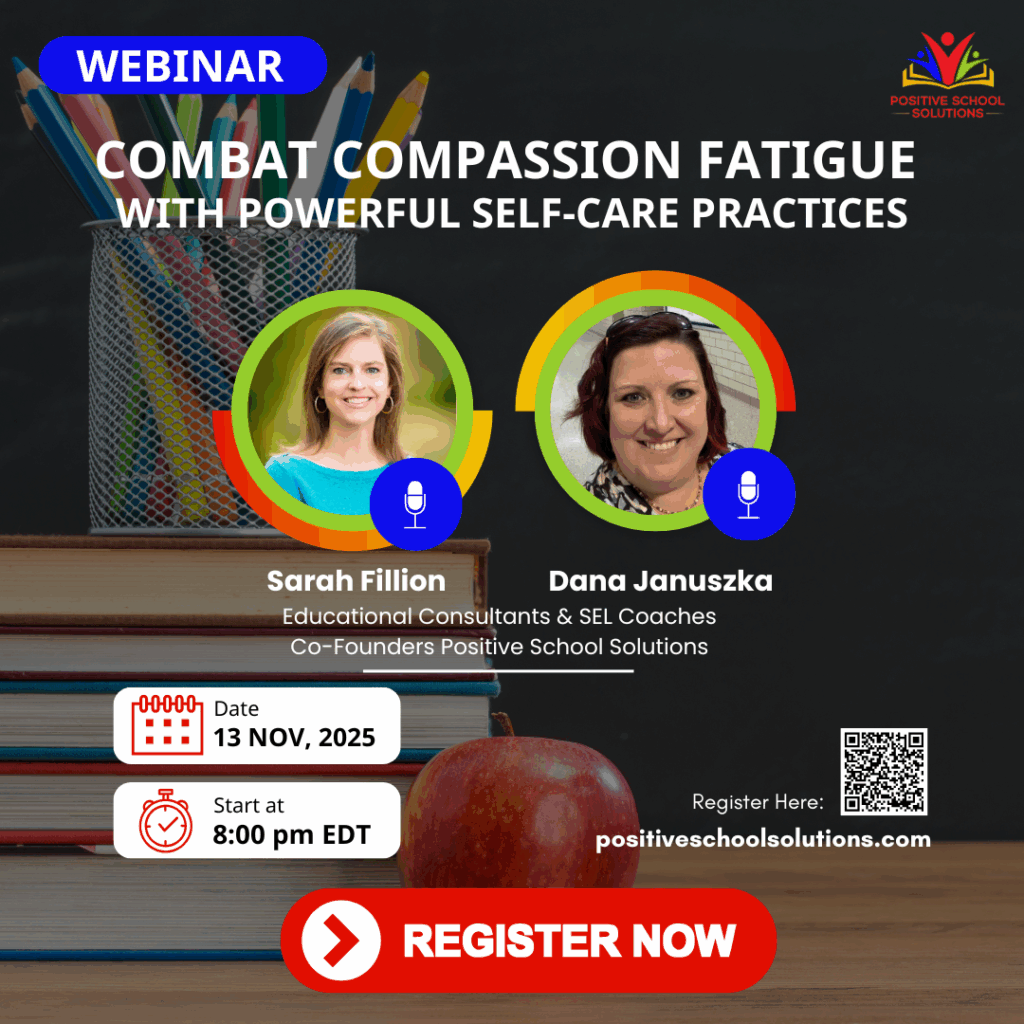We know that learning is hard work. Whether we are learning how to manage our finances, speak a new language, or cook a different cuisine, we know we are going to encounter challenges and setbacks. Luckily, as adults, we have a repertoire of strategies to help us successfully navigate the challenges and move forward. Students experience similar setbacks around learning something new and oftentimes need support in how to navigate the struggle. As educators, we can help students develop academic perseverance so they are prepared for the challenges that face them when learning something new, in school, work, and life. Focusing time and attention on strategies that will help students persevere keeps the momentum of learning alive and teaches students a variety of skills they can use to overcome slight academic struggles they encounter daily. 
When students do not have the necessary strategies to thwart academic setbacks, we see students go into fight, flight, or freeze mode. Those behaviors look like students acting out, distracting themselves, or disengaging completely. If students are successful in using these strategies, they are less likely to develop academic perseverance, thus continuing to find the slightest academic challenges difficult to navigate. We can help support students in developing academic perseverance, allowing them to thrive in all learning endeavors – both small and large.
Model
The first way we can help students develop academic perseverance is through modeling the strategies we use ourselves. Creating transparency, where we verbally reflect with students how we navigated a struggle or mistake allows students to see that we use a variety of strategies throughout the learning process. We can also create a learning environment where we let students know that it is ok to make mistakes – that mistakes are an opportunity for learning and are expected in our classroom. By emphasizing progress over perfection, we create the type of learning environment that encourages students to take risks. The more we model celebrating the small steps we have made towards achieving our goals, how we navigated a challenge, and the advances in our learning, the more likely we are to create lifelong learners.
Reflect
Reflection is a powerful tool in helping us learn. When we reflect on the strategies and processes used, we are able to identify what worked and make sense of the path we took. In addition to modeling reflection in our own learning, it is important that we provide time and a structure for reflection for students to follow so they too can reflect on their learning. We can embed reflection during a longer learning period by having students pause to reflect on something that is going well in their learning. Or, when students have completed an assignment, project, or unit, we might ask them to identify what went well, what struggles they encountered, and what strategies they used to overcome the challenges. When students share their personal strategies, other students are more likely to try those same strategies out in future learning. Likewise, when we provide opportunities for students to reflect on when they haven’t employed the strategies and instead become frustrated, or disengaged, we can guide students in visualizing another opportunity where they can try a new strategy.
Games
To help students build a mindset of perseverance in a fun and non-threatening way, we can play games that allow students to make mistakes and continue to participate. For example, when playing “Simon Says”, instead of a student being out, they can become a ‘distractor’, where they purposely do a different action than what Simon said. Allowing students to make a mistake and still be involved helps them to see that they can continue after making a mistake. Additionally, it teaches students the notion that when a mistake or challenge is faced, we might have to change our direction slightly, but we keep going.
Another way we can incorporate games to help build a mindset of perseverance is to choose games that emphasize cooperation over competition. Providing students opportunities to cooperatively accomplish a task or activity helps students feed off of one another’s energy. When students are encouraged by their classmates, they have an increased sense of belonging in the learning community and focus on accomplishing the task. When we combine playing games with reflection by having students recall strategies used during the activity, students are able to add to their repertoire of strategies to help them overcome academic setbacks.
Explicit Teaching
In order to teach students the skill of academic perseverance, we must address several social emotional learning skills as well. By teaching students skills of self-awareness, such as identifying our emotions and linking our feelings to our thoughts, students become more aware of when they start to feel frustrated and are able to employ a strategy earlier. Similarly, when we teach students the skills for self-management, such as planning or organizational skills, taking initiative, or strategies for stress-management, students increase the number of tools they have ready when they experience academic struggles and setbacks. By explicitly teaching the social emotional skills students need, in combination with strategies that help students define tasks, plan, monitor, or change their course of action, we equip students with the power and confidence to persevere in their learning.
We all want to see students be self-sufficient, successful learners. To help students build the skills and strategies they need to problem-solve in school, work, and life, we must create the conditions where students have opportunities to take the risk in trying them out and reflecting through discussion with classmates. In doing so, we prepare students to be successful in a variety of settings and create lifelong learners who value the journey as much as the gained knowledge.
Written by Sarah Fillion & Dana Januszka 2022

